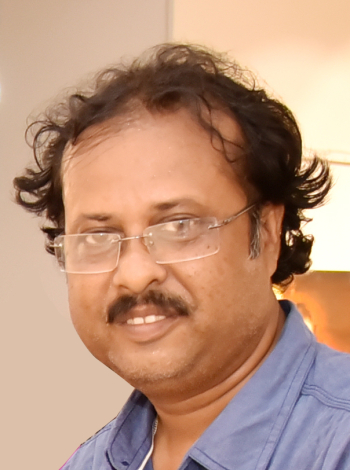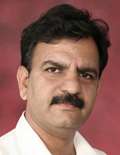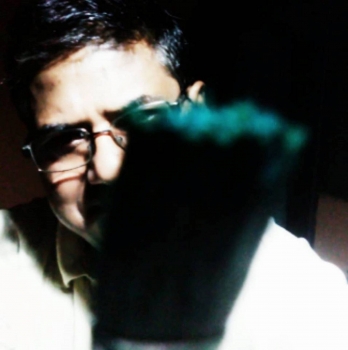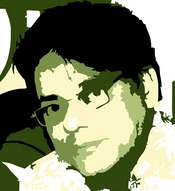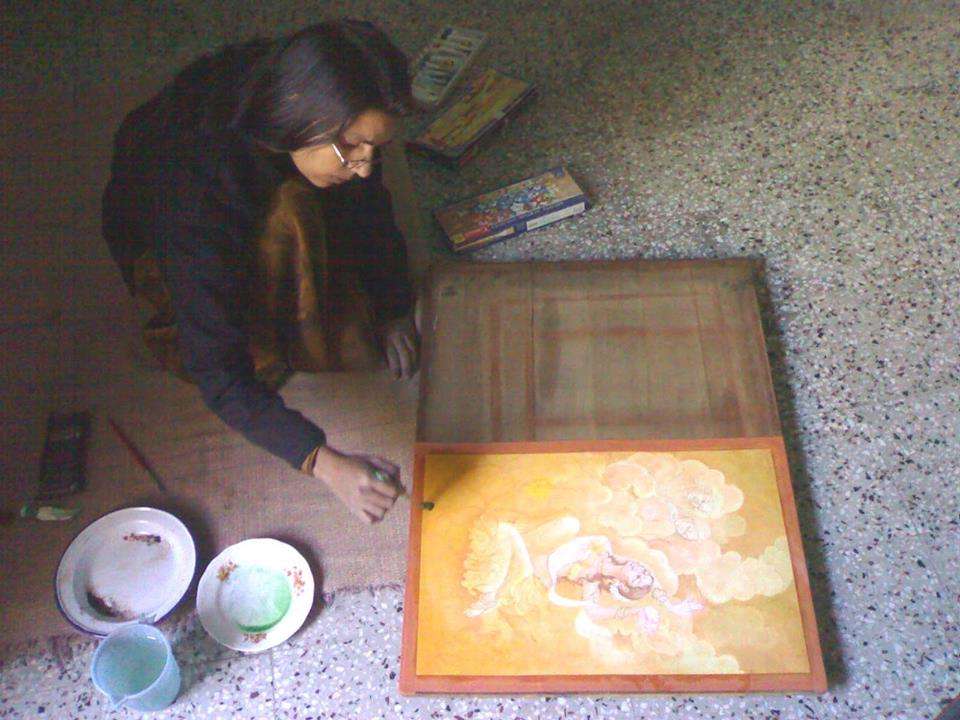
Being an agnostic and an art lover at the same time, I do admire the exceptional artistry after looking at Indian traditional paintings but also feel dubious about a lot of elements.
Take for example the exquisite and highly demanded Lord Shiva paintings. The physical manifestation of Shiva is simply ecstatic and artists’ imagination and creativity add so much grace and blissfulness in the artwork. But the elements or the details in these religious paintings make me curious to know more about the hidden meaning of these depictions.
Today, in this blog, I am going to discuss the fuelling topic about Mahadev, the Adi yogi, and the destroyer; Shiva’s third eye.
I am very sure, all of you must have heard or read about the third eye and made your own perception about the same. It is fascinating; seeing a third eye in the middle of the forehead. The most common perception is that if Shiva’s third eye is opened, the whole world will be annihilated. And you will say that’s why he is called as ‘destroyer’.
Another perception is that Shiva opens his third eye whenever he gets angry. This is quite a common assumption and no one bothers to hear the correct version.
All we see is the depiction of Shiva as he dances furiously with his trident performing ‘Tandava’ the cosmic dance of destruction opening his third eye. Well well….this is all going to change today as I am going to dig deeper to find the profound meaning of the third eye in Shiva’s depiction.
The Myth and the Truth
Let’s recall the story of Shiva and Sati. Sati marries Shiva going against the consent of his father Daksha. On the other hand, Daksha wanted to marry her daughter to a Deva or God and not to a hermit or an ascetic.
Now, when Daksha conducts a yagna or a sacrifice ritual, he invited all his relatives and sons-in-law except Shiva. It is believed he did on purpose to show his anger against the marriage.
This action of Daksha made Sati furious and when she asked her father about the action, he mocked by saying mean things about Shiva. Sati could not tolerate the disrespect and public humiliation and jump into the sacrificial fire giving her life.
Shiva, when came to know about this became filled with the feeling of rage and sorrow. This compelled Shiva to leave his usual calm avatar and he took the form of ‘Virabhadra’ (a warrior) and goes on a killing spree targeting everyone and anyone who had witnessed the injustice that happened with Sati.
Also Read: Why are Paintings the Best Gift for Every Occasion?
The spree ended when Shiva finally beheaded Daksha. To everyone’s and Shiva’s amazement, the vengeance and revenge could not end the feeling of sorrow that had sheltered inside him.
To this, Shiva took Sati’s corpse and roamed around the world crying miserably. It is said that anyone who can hear Shiva’s cry was filled with sorrow. Devas got scared that the sadness in Shiva will encapsulate the entire world and thus they sabotage the Sati’s corpse.
This made Shiva overcome his sorrow, but he went back to his ascetic self, trying to cleanse himself of all the sorrow, anger, and pain, thus waving off any worldly means.
So yes, Shiva did not open his third eye in this tale that is wrongly depicted in a lot of Indian traditional paintings and television shows.
The real story
Shiva opens his third eye when…let’s back up a little. Shiva is in meditation and after some time, Sati is reincarnated as the daughter of mountains, Parvati. She loved Shiva and in order to gain his attention, she tried everything to evoke a romantic response in him but his heart was as strong as the mountain.
Also Read: The Implied Meaning of Elements in Lord Shiva Paintings
Devas wanted desperately that Shiva and Parvati should get married and hence they sent Kama, the God of lust to influence the Adi Yogi. When Kama tried infusing the emotion of lust into Shiva’s heart, then Shiva opened up his third eye, burning Kama into ashes at once. This stunned everyone.
See Kama was the God of desire. And when Shiva killed Kama, the very basic foundation that keeps the world alive and going was destroyed. It meant that if there is no desire left, nobody will want love and the entire world will cease to exist as no reproduction will be done. This made Devas more worried as it now became extremely necessary for Shiva to marry Parvati now.
Parvati: The Shakti
Parvati was Goddess Shakti herself and Devas turned to her for help. Seeing this, Parvati started praying. She meditated intensely and didn’t respond to any external elements. As a result, Shiva came out of his cave and agreed on the proposition of Parvati to marry her.
This event, the marriage of Shiva and Parvati, once again balanced the entire world properly. Today, the Indian traditional paintings are incomplete without Lord Shiva paintings.
The Gist of the third eye
So, the third eye is used by Shiva to destroy Kama, the god of desire, which was the foundation of how life works. Shiva did so because he knew that with desire along with the feeling of love, compassion and contentment also come along the emotions of anger, rage, and sorrow. This is why Shiva is mostly seen mediating in a transcendence mode where there exists no emotion but the stillness.
What we see in Indian traditional paintings or other Shiva paintings, the third eye is not about the destruction of the universe but the eradication of desire from one’s life. When desire is killed, no right, no wrong, no good, no bad, nothing exists and the heart reaches a transcendence state which most of the hermits seek.
But, the tale of Shiva tells us that even if you think that being in a transcendence state is blissful, it takes you away from the realities of the world. The entire sense of what’s yours and what’s mine is gone. This creates an imbalance. And the world doesn’t work like that. A proper balance of desire and transcendence is required for this world to sustain. This is what the marriage of Lord Shiva and Goddess Parvati tell us!
Also Read: Understanding Lord Shiva and His Many Forms in Hindu Mythology












